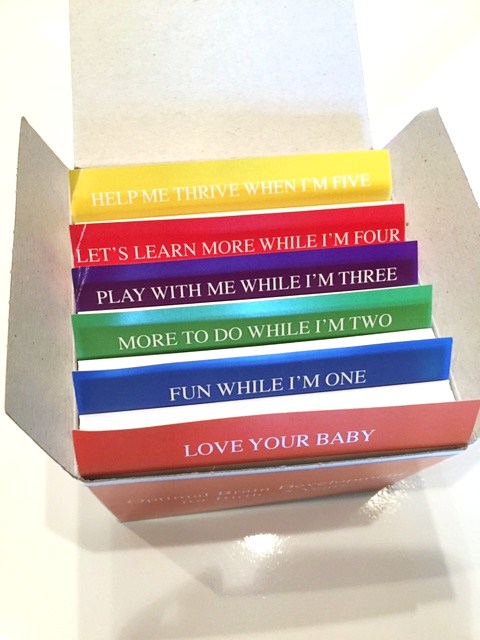Play is essential to the
healthy development of children. It is the way the brain learns best. It
provides the movement that is critical to overall development. It leads to
optimal social/emotional abilities. Due to the importance of play in helping a
child
thrive, I invited a Kate Drummond to share her knowledge and expertise in
a guest blog.
Enjoy the insights and ideas
she has provided here for you!
Kate
has been working with children as an occupational therapist for 16 years. She is certified in Sensory Integration by
the University of Southern California and Western Psychological Services. Her therapy company is, About Play, and she
is the co-founder of the Healthy Foundations Program.
Helping Your
Child Thrive: Engagement of the Sensory
Systems through Play
By Kate Drummond, OTR/L
Engaging
with your child in a playful way is highly beneficial for her development, from
early infancy, through childhood, and into teenage years. Not only does it foster an emotional
connection, but it can also help to build crucial foundational skills for academic
learning.
As a
sensory integration certified occupational therapist, I help to teach families
how to connect with their child while engaging the seven sensory
systems: touch/tactile, visual, auditory, movement/vestibular,
position/proprioceptive, smell/olfactory, and taste/gustatory.
Listed
below are several activities that you can use with your child to provide a
sensory-rich experience for them in their development.
Touch/Tactile
- Massage: Use a gentle, natural oil, such as grape seed oil, to massage your baby or child after a bath. As he gets older, teach him how to rub the oil into his own body.
- Provide a variety of textures for her to explore on: Provide different soft blankets for your infant to explore on during tummy time, and have cuddly toys or “lovey” blankets available for your child.
- Beach trips or visits to a sand box: sand provides a great tactile experience for children—but if playing in a sandbox, make sure that it has a cover.
- Provide opportunities for messy play: Provide regular opportunities for your child to get messy, and be aware of your own sensitivities to mess. Take it outside, or play with the soap foam or shaving foam on the tub tiles for easy clean up if mess bothers you.
Visual
·
Provide black and white
objects early on: Hang mobiles over the crib or over the
changing table, and provide black and white toys during early infancy.
·
Opt for natural or soft lighting whenever possible, avoiding the use of
fluorescent bulbs: This type of
lighting is easier on the eyes and nervous system.
·
Provide games or a moving
object that help your child follow your face
·
Use bubbles: Stimulate and engage the visual system.
·
Use an easel: This optimizes visual development while your child is learning how to
paint and draw.
·
Play with balls—a variety of
sizes: Bounce, catch, throw, and
kick to help with eye-body coordination.
·
Play flashlight tag: While lying down, tag and chase lights projected
on the ceiling or wall.
Auditory
- Play music during the day:
- Advanced Brain Technologies provides a collection of 4 Discs called “Music for Babies” geared for children aged birth-3 years old. Some compilations geared for sleep or relaxation, others geared for play. http://www.advancedbrain.com/music-for-babies/musicforbabies.html
- Hemi-Sync music “metamusic” can be played over speakers or on headphones for improved attention, focus, and sleep. http://www.hemi-sync.com/shopdisplayproducts.asp?id=218&cat=Children
- Bach or Mozart provides organizing and calming information to the brain during family meals or when your child is doing homework.
- Play “freeze dance” as a family or with friends: This builds coordination, engagement, and releases pent up energy.
* Freeze Dance is a game that you play
by doing freestyle dance while listening to music.
When the "controller" stops the music, you must freeze your
body in the spot, and don't
move until the music starts again.
The controller can call you "out" if you move while
the music has stopped.
- Use white noise: This noise can provide a soothing effect for sleep and can help to calm a fussy baby.
* White noise can be provided
by tuning into static on the radio, you can use the noise of a
fan, or you can even buy a sound
machine (at Target or Bed Bath Beyond) that provides
soothing noises or white noise
options.
Movement/Vestibular
- Allow for several opportunities to move in the day— helps child gain coordination, and allows her to be more focused for seated play/school work when older:
- Allow babies tummy time and play on the floor. This helps to develop gross motor coordination and bilateral integration of both sides of the body and upper and lower parts of the body.
- Use baby swings and rock your baby in a rocking chair.
- Allow children movement opportunities on scooters, trikes, and bikes throughout the day.
- Use the swings on the playground—respect your child’s fear and don’t go beyond her comfort zone.
- Allow for 45-60 minutes of movement before having your child do his homework. This will allow for greater attention and focus.
- Pool time! Swimming promotes coordination and healthy movement.
Position/Proprioception
- Provide tummy time for babies: This builds muscle and helps visual development.
- Provide play with tunnels: Encourage crawling as soon as your baby starts. This play is also beneficial after your child can walk—it stimulates both sides of the brain and provides great opportunity for coordination.
- Provide climbing opportunities in a safe environment: Use simple playground equipment: ladders, rope ladders, and rock climbing walls for older children. This type of feedback helps to “organize” the nervous system.
Smell (Olfactory)/Taste
(Gustatory)
- Provide natural aromatherapy in your home with essential oils: Different aromas can evoke emotions, and even promote health. For example, lemon, lemongrass, or other citrus scents can be uplifting, and lavender is more calming. Avoid artificial or synthetic scents.
- Provide your child with healthy food options
- Introduce your baby to healthy tastes. Homemade, organic options are great to introduce your baby to when he is exploring food. Freeze large batches in trays for defrosting perfect portions.
- Provide your child with the opportunity to have many different healthy choices, and even if your child will not eat them, continue to offer the food.
- Have your older child become involved: Grow veggies if possible, and/or have your child help to wash/prepare/handle/cut the food. If there is fear around food, approaching it in this way is especially helpful. Celebrate smelling and tasting the food versus “cleaning the plate.”
Other Considerations
- By modeling a healthy lifestyle for your child, you provide a great role model. Providing regular play, exercise, nutritious and balanced meals; engagement with your child will greatly help him create a solid foundation in his life.
- Some children have sensory processing differences that cause them to be sensitive to environmental stimulation (noise, touch, movement, taste and/or smell), to be clumsy or have coordination difficulties, to have low body awareness/high pain threshold, or sensory “seeking” behaviors. Frequent meltdowns with difficulty recovering can also be a sign of a sensory processing problem. If your child presents with any of these behaviors in a way that impacts his functional performance at home or in school, I recommend seeking an occupational therapist who is skilled or certified in sensory integration to help determine if your child can benefit from services.
Kate
enjoys providing lectures for parents and teachers, consulting with parents,
and playing with children. She lives at
home with her husband, 3 children, and dog in Atlanta, Georgia.
You
can find more out about her on her website www.aboutplaytherapy.com, follow her
on Twitter @about_play, or Facebook under Healthy Foundations.
Have A Great Time Playing!!!
For more play ideas for
everyday life go to www.braininsightsonline.com










